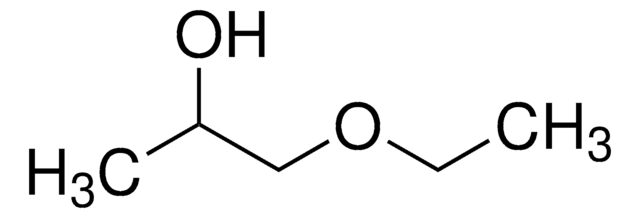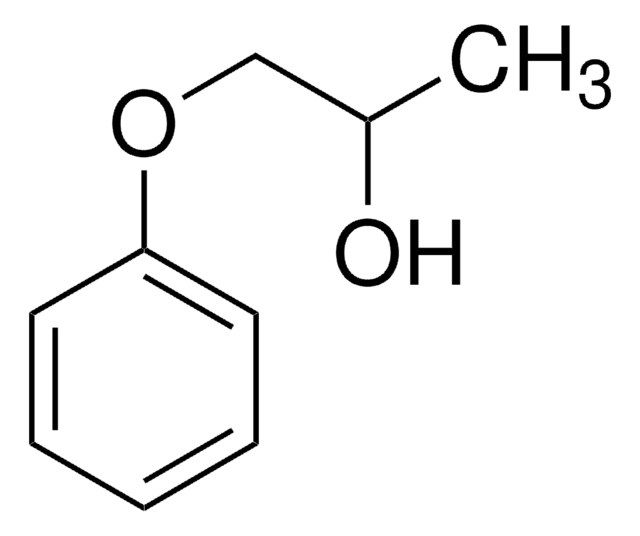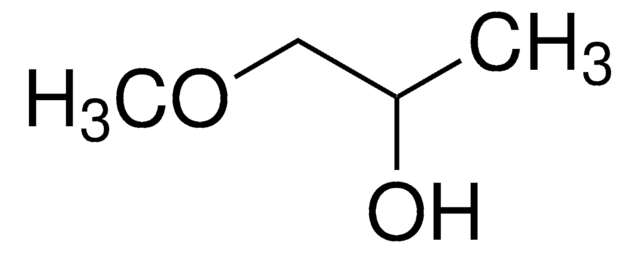537675
Ethylene glycol monopropyl ether
ReagentPlus®, ≥99.40%
Synonym(s):
2-Propoxyethanol, Propyl glycol
About This Item
Recommended Products
grade
reagent
vapor pressure
1.3 mmHg ( 20 °C)
product line
ReagentPlus®
Assay
≥99.40%
form
liquid
dilution
(for general lab use)
impurities
≤0.100% (water)
refractive index
n20/D 1.413 (lit.)
bp
150-153 °C (lit.)
mp
−75 °C (lit.)
density
0.913 g/mL at 25 °C (lit.)
SMILES string
CCCOCCO
InChI
1S/C5H12O2/c1-2-4-7-5-3-6/h6H,2-5H2,1H3
InChI key
YEYKMVJDLWJFOA-UHFFFAOYSA-N
Looking for similar products? Visit Product Comparison Guide
General description
Legal Information
Signal Word
Warning
Hazard Statements
Precautionary Statements
Hazard Classifications
Acute Tox. 4 Dermal - Eye Irrit. 2 - Flam. Liq. 3
Storage Class Code
3 - Flammable liquids
WGK
WGK 1
Flash Point(F)
118.4 °F - closed cup
Flash Point(C)
48 °C - closed cup
Choose from one of the most recent versions:
Already Own This Product?
Find documentation for the products that you have recently purchased in the Document Library.
Customers Also Viewed
Our team of scientists has experience in all areas of research including Life Science, Material Science, Chemical Synthesis, Chromatography, Analytical and many others.
Contact Technical Service














